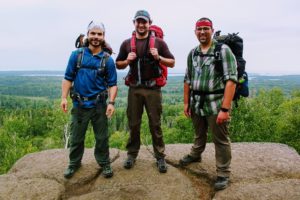Not another “here’s my backpacking gear” post!? Yeah, they are all over, just YouTube it if you don’t believe me. As much as it’s an over saturated topic, I do think it can be helpful, especially when new to the world of backpacking, but also when looking for specific items. One example would be that I recently was looking for a small way to have sun protection/screen. I follow Darwin onthetrail, and one of his recent videos and found the Joshua Tree Sun Stick. Not a cheap item, but small, and since I don’t often use sun screen, this will likely last me several trips. I also was rather dissapointed with the bag that came with the Sawyer Squeeze water filter, and eventually found the Katadyn BeFree 1.0L Water Filter. Sometimes gear posts can be helpful. Anyway, I’ll be giving an overview of both my gear as well as my clothing in this post, so here it goes.
Table of Contents
Gear

The vast majority of my gear is shown in the image above, with the primary items to the left, and the miscellaneous items to the right. A not so thorough list is:
- Gregory Mountain Products Zulu 65 Liter Men’s Hiking Backpack
- Therm-a-Rest Space Cowboy 45-Degree Synthetic Mummy Sleeping Bag
- Winterial Single Person Personal Bivy Tent
- OutdoorsmanLab Ultralight Sleeping Pad
- Hikenture Camping Travel Pillow
- Gregory Mountain Products Hydration 3L Reservoir
- TOAKS Titanium 750ml Pot
- MSR PocketRocket Ultralight Backpacking
- Black Diamond Spot Headlamp
- Altra Lone Peak 3.5 Men’s Trail Running Shoe
- Altra Trail Gaiter Protective Shoe Covers
- Snow Peak Hot Lips
- Foxelli Carbon Fiber Trekking Poles
- AUKEY 20000mAh Power Bank
- Wise Owl Outfitters Dry Bag 3-Pack
- Joshua Tree Sun Stick
- Katadyn BeFree 1.0L Water Filter
Backpack
Below is an image with everything you see in the above image packed into my backpack. Don’t ask me what the final weight is…we don’t have a scale. Couple comments on the backpack. There’s a cavity at the base where I pack my sleeping bag, sleeping mat, and pillow. There’s the “brain” or top of the pack which holds all my miscellaneous items, and the core obviously holds the rest. Within the pack itself is….another pack. It’s small, and essentially holds my 3L water reservoir while in the primary pack, but can be removed to use on day hikes (which I’ve done). This pack comes with a full rain fly that covers the entire pack for heavy rains. Oh, and it has so many straps, pockets, and zippers that I still think there are some I haven’t found yet.
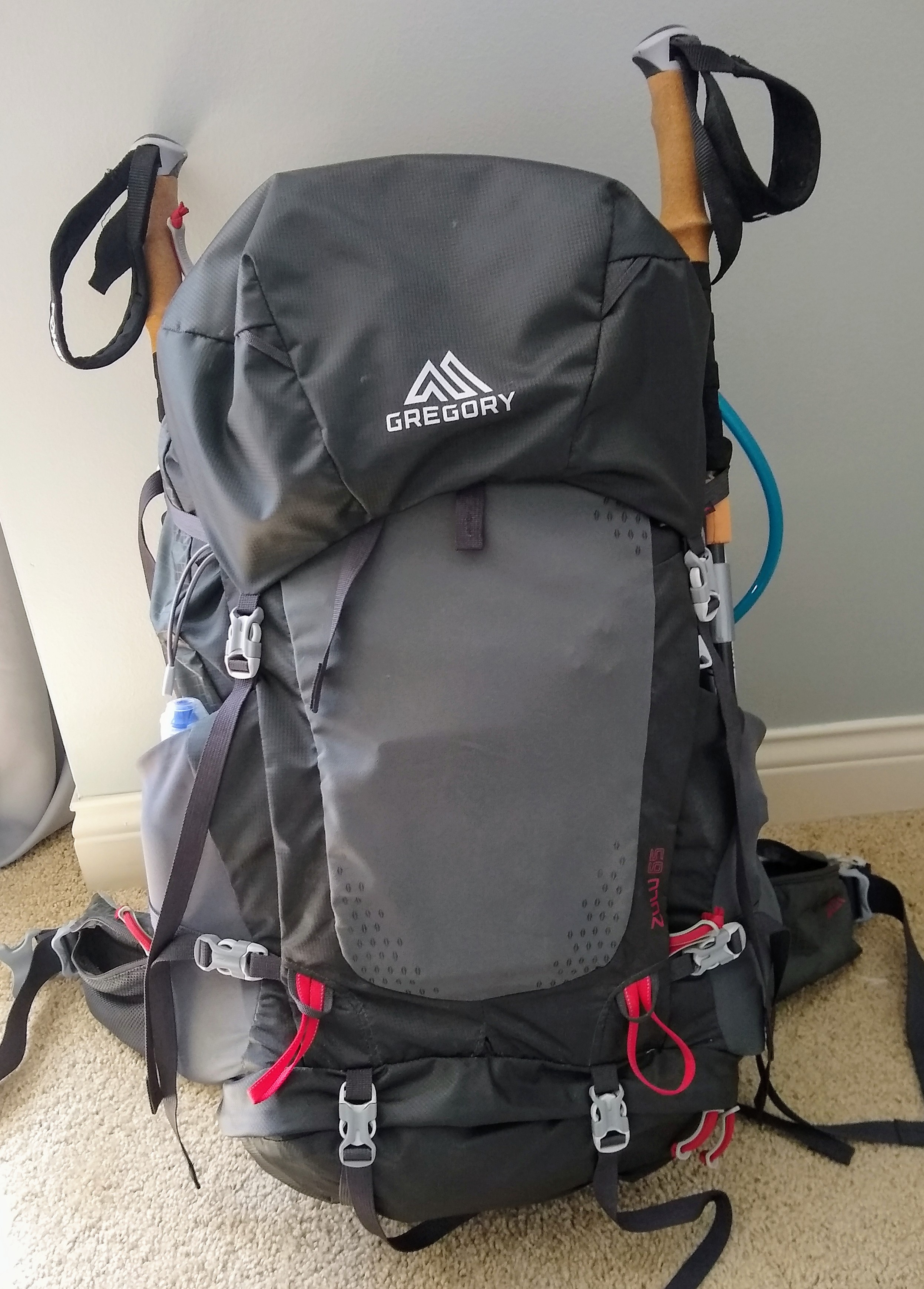
Tent
There’s really one big reason why I bought this tent, and that is because it’s small. At just over 2 pounds, it’s easy to pack away and carry all day long. You can checkout the link above for assembled photo, but I have a few below that give a better perspective. It comes with a rainfly, but doesn’t necessarily require it, so I could leave it off and have a full view of the sky at night if I wanted.
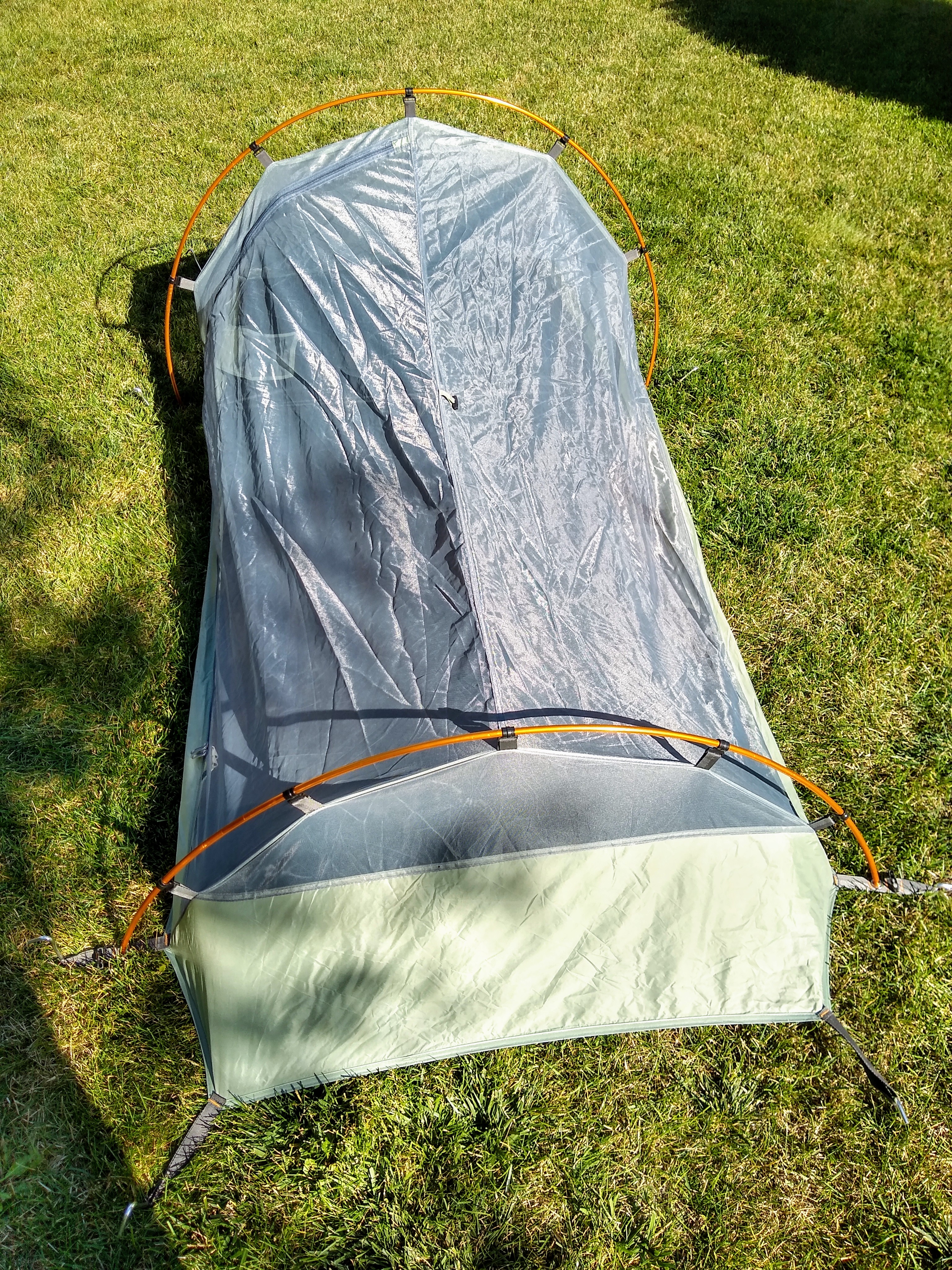
It’s really important to understand just how small this tent is. I have enough room for me and my pack (which I place above my head). It’s small enough where I could see someone getting claustrophobic being in there too long. Typically I get in for bed, and get out when I wake up. It’s also a little bit of a challenge getting dressed in it, but not impossible. Overall it’s a functional tent that is, in my opinion, just right for 1-person backpacking.
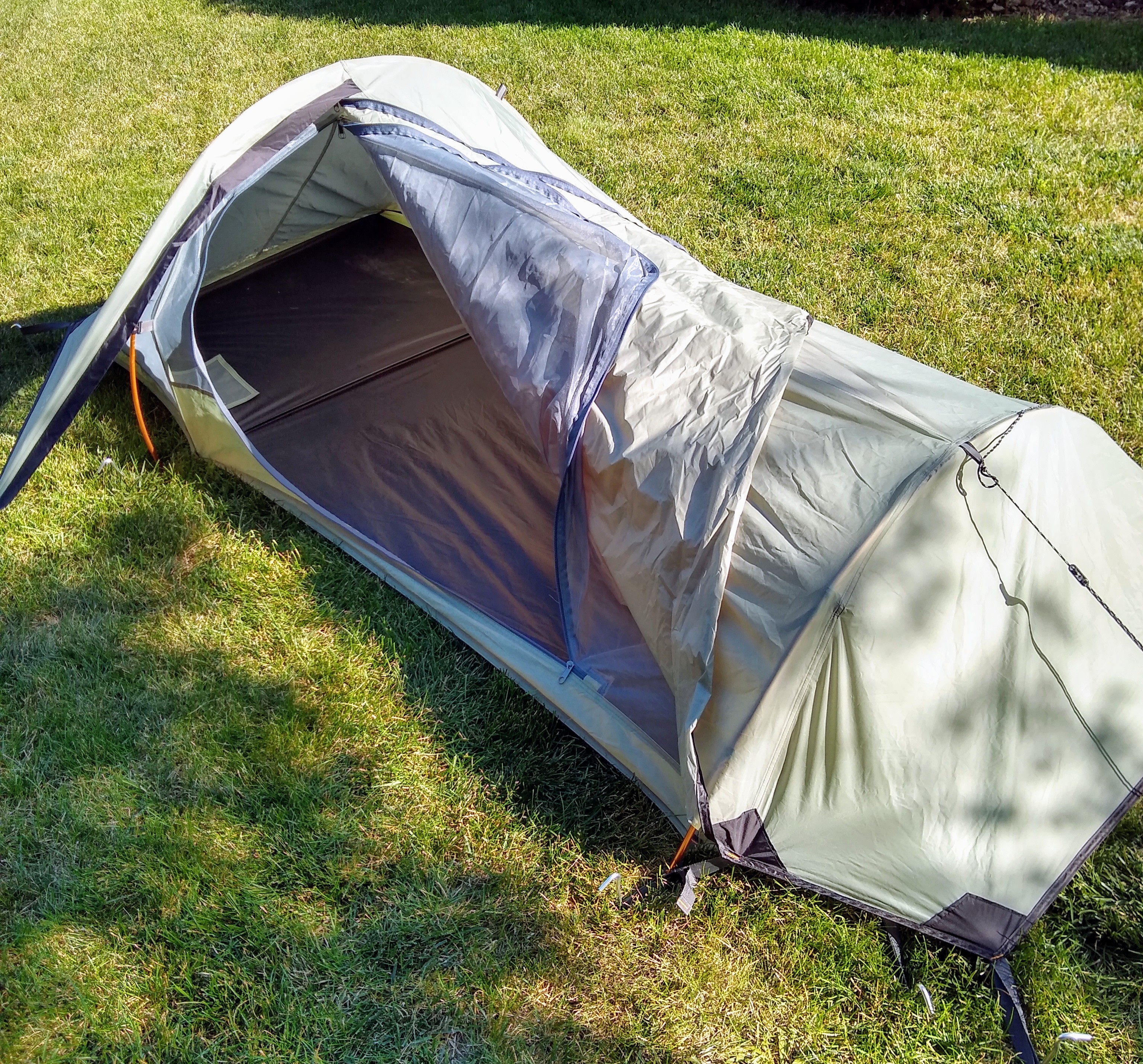
Clothing
Ok, so there’s a wide variety of ways you can go about deciding what backpacking clothes to take, so this is just my own personal preference, and I’ll try to detail some things that I didn’t like about my 2018 backpacking trip clothing.
Day Clothes
The image below is basically my clothing I’ll be wearing during the day. I must confess, I’m an overpacker when it comes to clothing. You’ll find that many backpackers going on trips less than 4-5 days will just wear a single set of clothes the whole time. Because we’re circling back to our vehicle on day 2 (see my previous post on this), I can afford to have extra clothing since I can swap out mid trip. Anyway, generally my clothing consists of all synthetics:
- Running shorts
- Compression pants
- Boxers
- Darn Tough Socks
- Running shirt
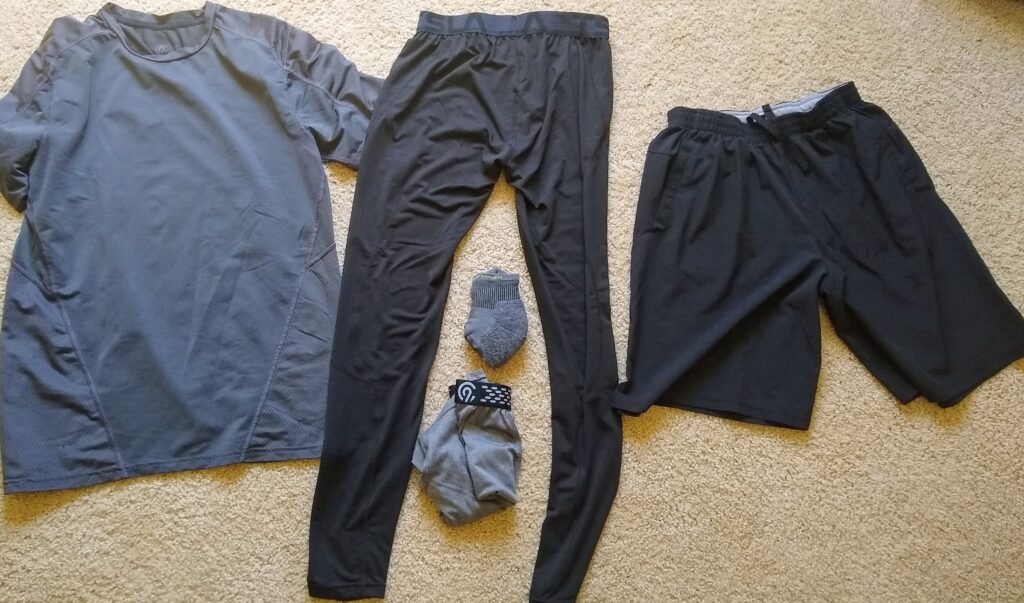
So…the compression pants. On my last hike I had Convertible Pants which could zip away to shorts. They worked ok, but didn’t breath much and I felt like I was wearing a plastic bag, and when they got wet they absorbed water, getting heavier. This time I’m going to try sticking to shorts, and swap in compression pants if it gets too cold or I want leg protection. They are more breathable, very light, and yet still give some protection. We’ll see how they go…. The only other item worth noting are the Darn Tough Socks. I bought an extra set of these because I was so happy with them on my last hike. Contrary to what you might think, 100% wool socks in summer is actually not a bad thing. I use trail runner shoes, which aren’t water proof (stick with me here, I’ll explain), so when the wool socks get wet, it doesn’t take long for them to dry out. I was also amazed at how I could wear them a couple days straight and they didn’t smell like a fish market. These socks are worth the price. And as for the trail runners, it’s common belief that having fully waterproof boots is the way to go when hiking, but I think this idea is being turned on its head. A more reasonable approach is to realize that your footwear will get wet, and having them breathable and able to dry out quickly is actually much better, thus the recent explosion of trail runner shoes.
Inclement Weather
If we do run into rain or unusually cool weather, I’ll have my rain jacket, as well as a long sleeve Columbia shirt to keep me warm and try. I sprayed both my rain jacket, as well as my tent, with Kiwi Camp Dry Heavy Duty Water Repellent to give them added protection.

Night Clothes
Yes, this is a thing, and it’s a good habit to get into. I’m taking a set of clothes that I ONLY wear at night in my tent. These clothes stay in a Ziploc bag all day, and I take them out only for sleeping. This guarantees I have something dry to wear at night, which is way more important than you might think. It could be miserable weather, but if you can zip into your warm sleeping bag in dry clothes in a dry protected tent, that can really give you the sleep you need for the next day.
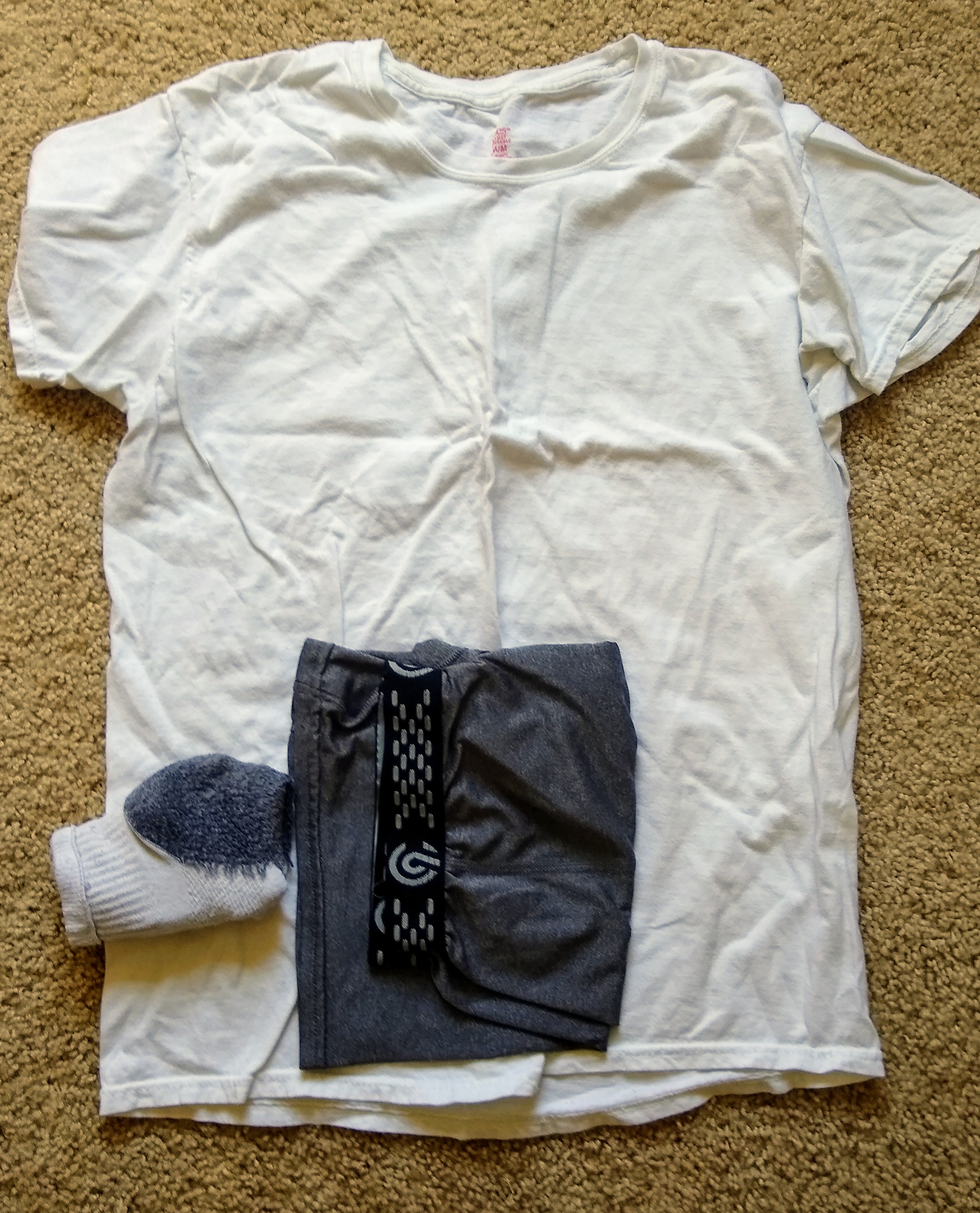
Onward!
This is a bit more than I thought I’d be writing prior to our backpacking trip, but getting this information out there will allow me to really focus on the trip itself when I generate that post. If you’re not a backpacker, I hope this at least gives you a glimpse into what it means to get into this activity, and how much thought it can take to plan a successful trip.
We (4 of us) start our backpacking at the Porcupine Mountains on the morning of Thursday the 20th, and finish the morning of the 24th. Thanks for reading, and you can read about how it went in a couple weeks!


